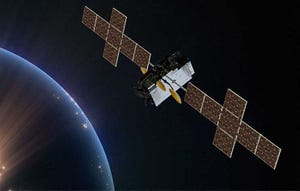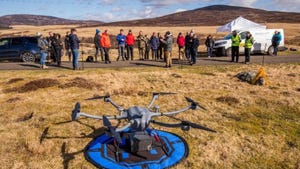GreenTouch Exceeds Energy Efficiency Goals
Global consortium concludes five-year effort by sharing findings, new tools, technologies and architectures that offer energy savings for wireless, fixed and core networks.
June 22, 2015
NEW YORK -- GreenTouch, the global consortium dedicated to dramatically improving the energy efficiency of data communications networks, today announced its final results and unveiled new tools, technologies and architectures to improve the energy efficiencies of communications networks in years to come. During a celebratory event in New York, GreenTouch revealed that its new approaches can improve energy efficiencies of mobile-access networks by more than 10,000X – an achievement far exceeding the original goals of the working group.
The consortium also announced research that will enable significant improvements in other areas of communications networks, including core networks and fixed (wired) residential and enterprise networks. With these energy-efficiency improvements, the net energy consumption of communication networks could be reduced by 98% from 2010 to 2020 while accounting for significant traffic growth. This savings is equivalent to the greenhouse gas emissions of 5.8 million cars.
“It’s amazing how fast the time has flown by since the start of the GreenTouch project, but what’s most impressive are the results our international team of scientists, academics, and industry leaders have achieved, in just five short years, to chart a path to greener networks,” stated Thierry Van Landegem, chairman, GreenTouch. “With the public release of tools and technologies that industry and academia can use now to design and deploy more energy-efficient communications networks today and in the future. Our work will not only enable a more productive and sustainable future, but will also help many more people to connect with one another.”
GreenTouch was formed in 2010, driven by the vision and leadership of Bell Labs, the industrial research arm of Alcatel-Lucent. Its aim was to determine how to support the burgeoning growth of communications networks in a sustainable and economically viable way. At that time, the consortium determined that reduced energy consumption and increased energy efficiency can enable the practical and greater use of renewable energy.
The information and communications technology (ICT) industry, including the network of networks that underpins the global Internet, will account for about 1.97 percent of worldwide carbon emissions in 2030, according to the SMARTer2030 report issued by the industry partnership GeSI. This figure can potentially be larger as more people seek to connect with each other and access more content in new, richer ways. In addition, the emissions avoided through greater use of ICT approaches are estimated to be almost ten times larger than the direct effect of emissions generated by ICT, which would have an impact on the broader opportunity for climate change and economic development through many emerging ICT services and applications.
During today’s event, GreenTouch announced it is making two tools publicly available to any organizations and stakeholders interested in creating more efficient networks:
GWATT (http://gwatt.greentouch.org/): A web-based, interactive application that provides a complete view into the entire GreenTouch portfolio of technologies and the energy impact from an end to end viewpoint.
Flexible Power Model (www.imec.be/powermodel): An advanced power model and software tool that provides realistic power consumption values for a variety of current and future cellular base station types, configurations and scenarios. This tool provides a technology roadmap to industry stakeholders
In addition, members demonstrated key technologies contributing to the results, which include a number of previously unannounced GreenTouch innovations. Some of the major contributors to the findings include:
Beyond Cellular Green Generation (BCG2)—This architecture uses densely deployed small cells with intelligent sleep modes and completely separates the signaling and data functions in a cellular network to dramatically improve energy efficiency over current LTE networks.
Large-Scale Antenna System (LSAS)— This system replaces today’s cellular macro base stations with a large number of physically smaller, low-power and individually-controlled antennas delivering many user-selective data beams intended to maximize the energy efficiency of the system, taking into account the RF transmit power and the power consumption required for internal electronics and signal processing.
Distributed Energy-Efficient Clouds –This architecture introduces a new analytic optimization framework to minimize the power consumption of content distribution networks (the delivery of video, photo, music and other larger files – which constitutes over 90% of the traffic on core networks) resulting in a new architecture of distributed “mini clouds” closer to the end users instead of large data centers.
Green Transmission Technologies (GTT) – This set of technologies focuses on the optimal tradeoff between spectral efficiency and energy efficiency in wireless networks, optimizing different technologies, such as single user and multi-user MIMO, coordinated multi-point transmissions and interference alignment, for energy efficiency.
Cascaded Bit Interleaving Passive Optical Networks (CBI-PON) – This advancement extends the previously announced Bit Interleaving Passive Optical Network (BiPON) technology to a Cascaded Bi-PON architecture that allows any network node in the access, edge and metro networks to efficiently process only the portion of the traffic that is relevant to that node, thereby significantly reducing the total power consumption across the entire network.
Green Touch
You May Also Like









